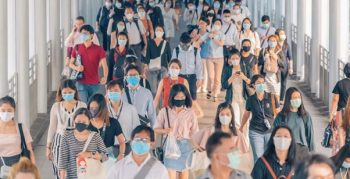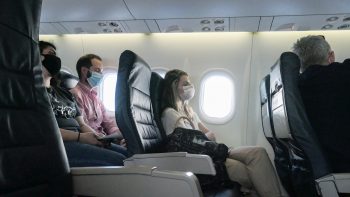
TIPS ON PREVENTING THE SPREAD OF CORONAVIRUS AT IN-PERSON EVENTS
Fully vaccinated people do not need to wear a mask or maintain social distancing in most indoor and outdoor settings. However, face masks are still required for travel.
The Centres for Disease Control and Prevention updated its guidance to say that fully vaccinated people do not need to wear a mask or socially distance in most indoor and outdoor settings — unless required by federal, state, local or tribal laws, or by a business. People are considered fully vaccinated at least two weeks after receiving the single dose of the Johnson & Johnson vaccine, or the second dose of the Pfizer or Moderna vaccines.
“Anyone who is fully vaccinated can participate in indoor and outdoor activities, large and small, without wearing a mask or physical distancing”. “If you are fully vaccinated, you can start doing the things you had stopped doing because of the pandemic. We have all longed for this moment, where we can get back to some sense of normalcy.”
Those who are not fully vaccinated, however, should continue to wear face masks indoors and in some outdoor settings. In addition, masks are required at all times when traveling, regardless of vaccination status. This includes on planes, buses, trains and other public transportation, as well as at transportation hubs such as airports and train stations. Full details on the agency’s recommendations for vaccinated and unvaccinated people can be found on the CDC website.
The news comes shortly after the CDC announced that fully vaccinated people can travel within the U.S. without getting a Covid-19 test or having to quarantine. All international travellers entering the U.S., however, are still required to show proof of a negative Covid-19 test prior to boarding. Anyone traveling internationally who has not been fully vaccinated must also get tested three to five days after travel and stay home and self-quarantine for a full seven days after travel. If they do not get tested after travel, they must quarantine for 10 days. International travellers who are fully vaccinated do not need to quarantine after travel but are still advised to get tested within three to five days of returning.
At-home Covid-19 tests can now be used to satisfy the CDC’s testing requirements for international travellers. The home test must be a SARS-CoV-2 viral test, either NAAT or antigen, both of which have received emergency-use authorization from the Food and Drug Administration. The testing procedure must include a telehealth service affiliated with the manufacturer of the test that provides real-time supervision remotely through an audio and video connection. Some FDA-authorized self-tests that include a telehealth service might require a prescription. The CDC’S Page on International Travelling has the full requirements.
The latest guidance is expected to help restart the meetings industry. Details on what to do before, during and after an event to ensure the highest levels of safety are outlined below. Planners can also consult the CDC’s Event Readiness Assessment checklist.
CDC Guidelines for Events
Meeting organizers preparing for shows scheduled in 2021 and beyond must consider the health and safety of attendees and staff at every step of the planning process. Guidance from the CDC provides a critical roadmap for resuming events in the U.S., with details on how to evaluate the risk levels and key actions that can help prevent the spread of the virus. Cleanliness protocols are also covered.
The CDC guidelines encourage event organizers to follow state and local regulations on gatherings. Meeting planners should continually monitor the outbreak and make adjustments to the event plan as needed.
“Event planners should work with state and local health officials to implement this guidance, adjusting to meet the unique needs and circumstances of the local community,” reads the document. According to the CDC, “this guidance is meant to supplement — not replace — any state, local, territorial, or tribal health and safety laws, rules, and regulations with which gatherings must comply.”
The following is extrapolated from the CDC recommendations:
Risk Factors to Consider
- The number of Covid-19 cases within the community: High or increasing levels of local infection could increase the risk of spread among attendees.
- Potential for exposure during travel: Airports, airplanes, bus stations, buses, train stations, trains and public transport are all places where physical distancing might be challenging and ventilation could be poor.
- Length of the event: Longer meetings pose greater risk. Being within six feet of someone who has Covid-19 for a total of 15 minutes or more (over a 24-hour period) greatly increases the risk of becoming infected.
- The setting: Indoor events, especially in places with poor ventilation, pose more risk than outdoor events.
- Number of people attending: The more people there are at an event, the greater the likelihood for exposure. Planners must also consider crowding and should implement modified room layouts or block off seats to ensure social distancing.
- Behaviour of attendees: Events where unvaccinated people do not maintain physical distancing and/or do not wear a mask correctly can increase the risk of contagion.
Content per successfulmeetings




